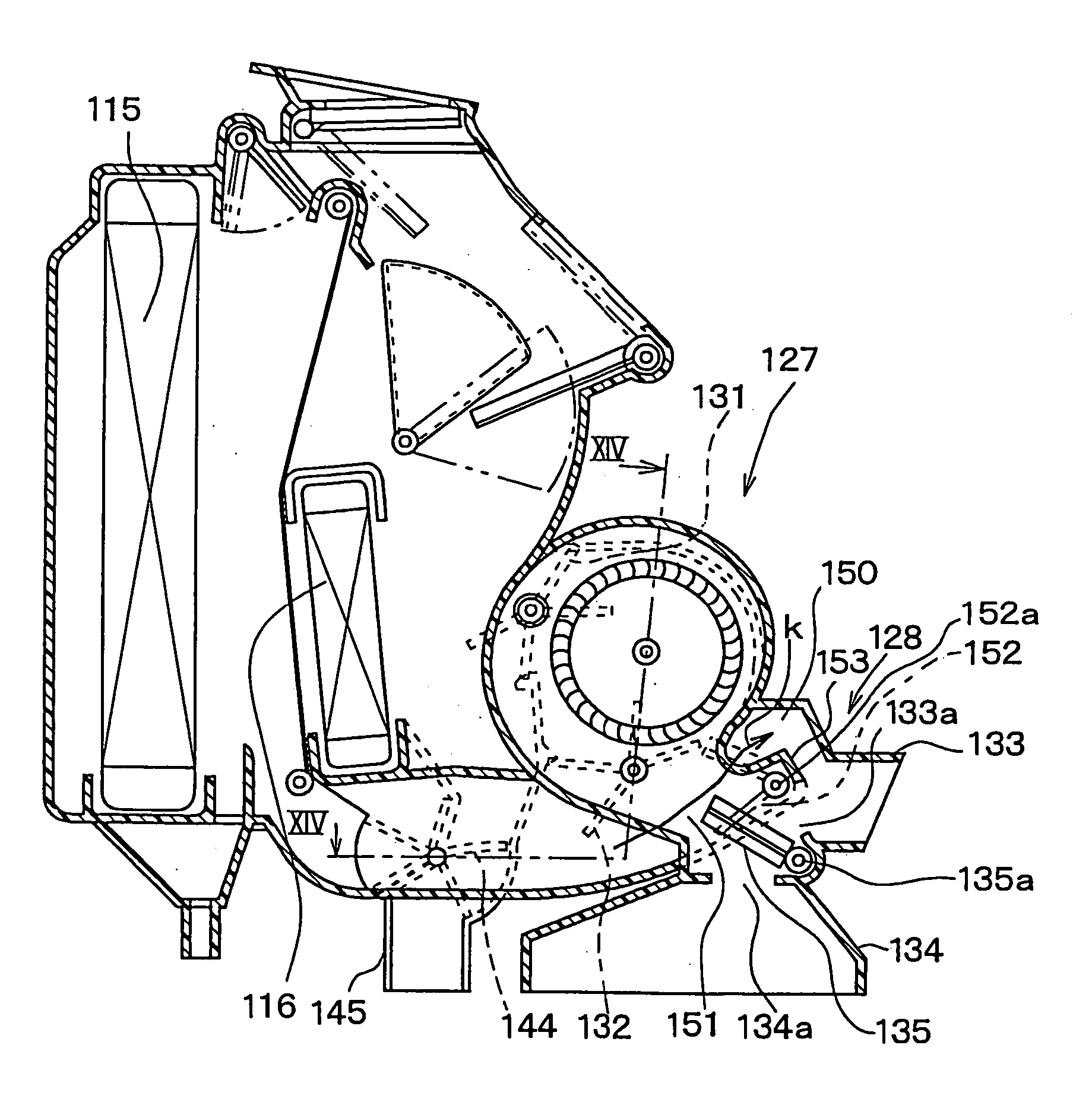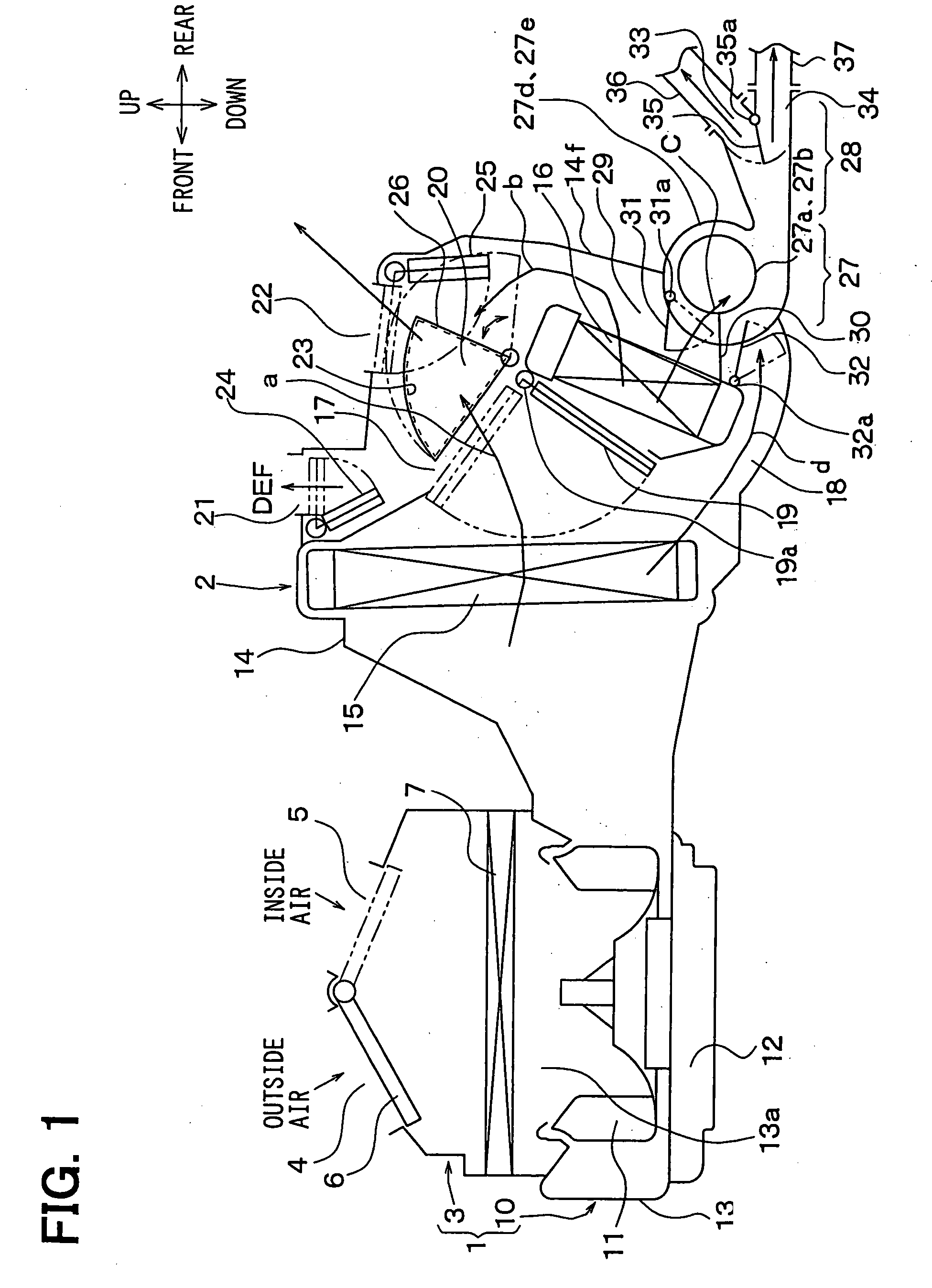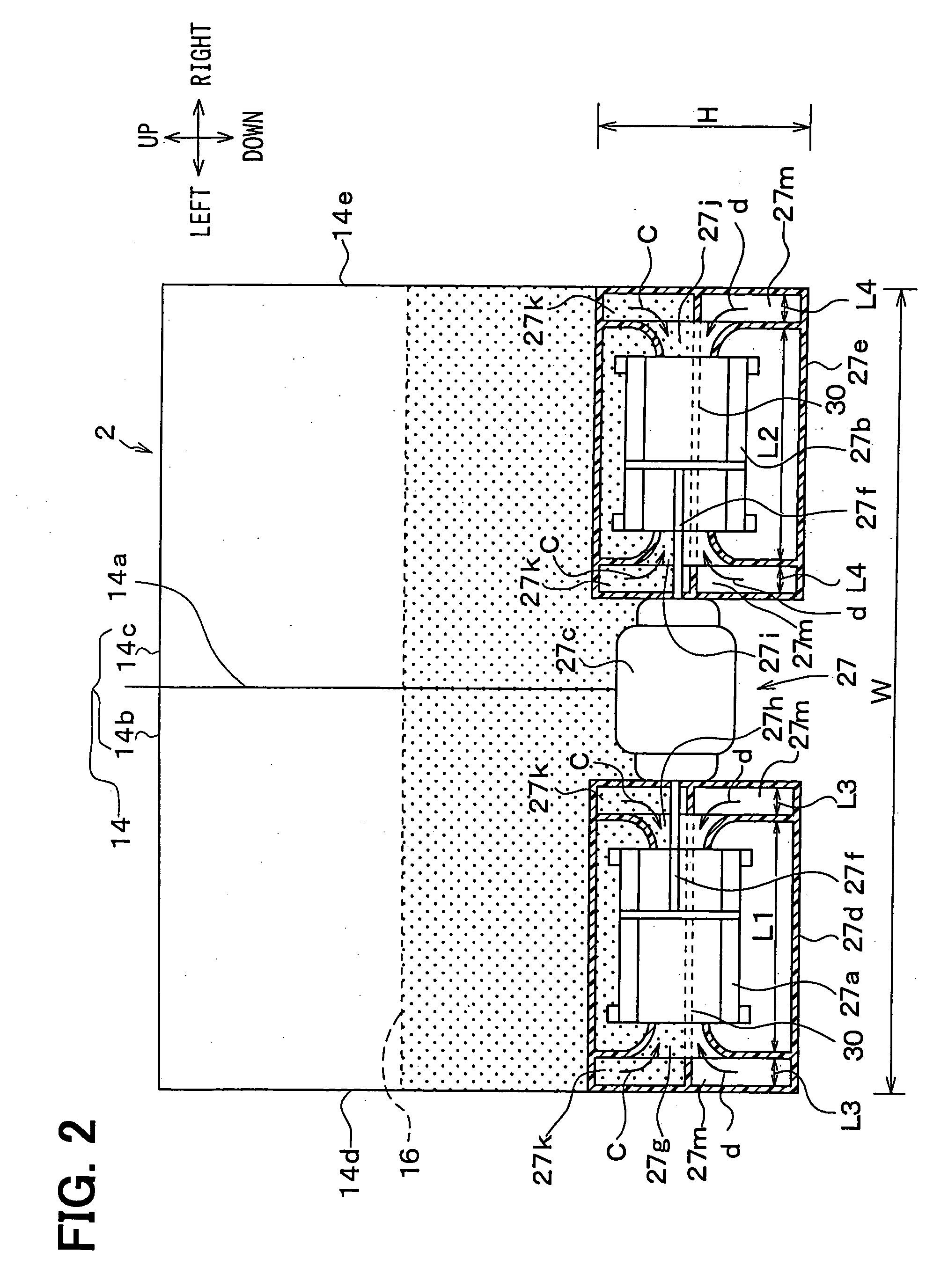Vehicle air conditioner with main blower and sub-blower
a technology of air conditioner and sub-blower, which is applied in refrigeration components, transportation and packaging, light and heating equipment, etc., can solve the problems of increasing the noise of motor operation, increasing the power consumption of the blower but also the operation noise of the motor, and increasing the air blowing nois
- Summary
- Abstract
- Description
- Claims
- Application Information
AI Technical Summary
Benefits of technology
Problems solved by technology
Method used
Image
Examples
first embodiment
[0034] (First Embodiment)
[0035] An interior air conditioning device shown in FIG. 1 is broadly constructed of a blower unit 1 and a heat exchange unit 2. In FIG. 1 and FIG. 2, arrows showing "up and down", "front and rear", and "left and right" indicate directions in a state where the heat exchange unit 2 is mounted in a vehicle, respectively. In FIG. 1, for convenience of preparing a drawing, the blower unit 1 is arranged on the front side of the vehicle of the heat exchange unit 2, but in reality, the blower unit 1 is arranged at an offset position in the lateral direction of the vehicle of the heat exchange unit 2. That is, the heat exchange unit 2 is arranged nearly at the center in the lateral direction of the vehicle inside an instrument panel (i.e., dashboard) in the passenger compartment. The blower unit 1 is arranged to be offset to a front passenger's seat side from the position of the heat exchange unit 2 in the lateral direction of the vehicle.
[0036] The blower unit 1 ha...
second embodiment
[0089] (Second Embodiment)
[0090] The second embodiment of the present invention will be now described with reference to FIG. 3.
[0091] In the above-described first embodiment, the centrifugal fans 27a, 27b in which air flows in the radial direction of a fan impeller are used as the sub-blower 27. However, in the second embodiment, as shown in FIG. 3, a cross flow fan 27n in which air flows through a section normal to the axis of the fan impeller is used as the sub-blower 27.
[0092] In FIG. 3, the same parts as in the first embodiment are denoted by the same reference symbols and their descriptions will be omitted. An air inlet space 40 through which air sent from the blower unit 1 flows is formed in the front portion in the case 14. In the second embodiment, the front temperature adjusting unit and the rear temperature adjusting unit are constructed of well-known film doors 41, 42.
[0093] The front film door 41 is made of a flexible resin film material (resin thin film-shaped member). ...
third embodiment
[0102] (Third Embodiment)
[0103] The third embodiment of the present invention will be now described with reference to FIGS. 4 and 5.
[0104] In the first embodiment, when the rear sub-blower 27 is constructed of blower fans 27a, 27b each made of a centrifugal fan, the driving motor 27 is formed in double shaft type and the blower fans 27a, 27b are arranged on the left and right sides in the axial direction of the driving motor 27c. In the third embodiment, however, when the sub-blower 27 is constructed by the use of the blower fans 27a, 27b each made of a centrifugal fan, as shown in FIGS. 4, 5, the driving motor 27c is provided with another rotary shaft 27f-2 parallel to the rotary shaft 27f-1 of the blower fans 27a, 27b and is arranged on the outer peripheral side of the blower fans 27a, 27b.
[0105] Then, the motor rotary shaft 27f-2 is connected to the fan rotary shaft 27f-1 by using a belt 46 to transmit the rotation of the driving motor 27c to the blower fans 27a, 27b via the belt...
PUM
 Login to View More
Login to View More Abstract
Description
Claims
Application Information
 Login to View More
Login to View More - R&D
- Intellectual Property
- Life Sciences
- Materials
- Tech Scout
- Unparalleled Data Quality
- Higher Quality Content
- 60% Fewer Hallucinations
Browse by: Latest US Patents, China's latest patents, Technical Efficacy Thesaurus, Application Domain, Technology Topic, Popular Technical Reports.
© 2025 PatSnap. All rights reserved.Legal|Privacy policy|Modern Slavery Act Transparency Statement|Sitemap|About US| Contact US: help@patsnap.com



